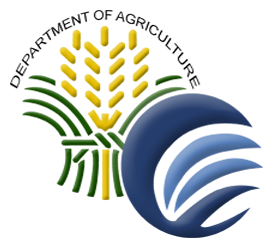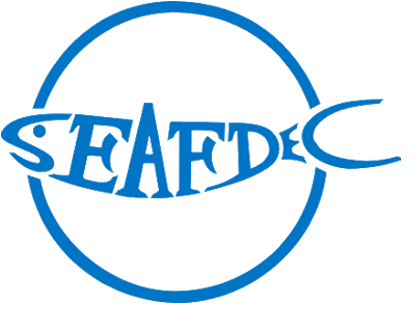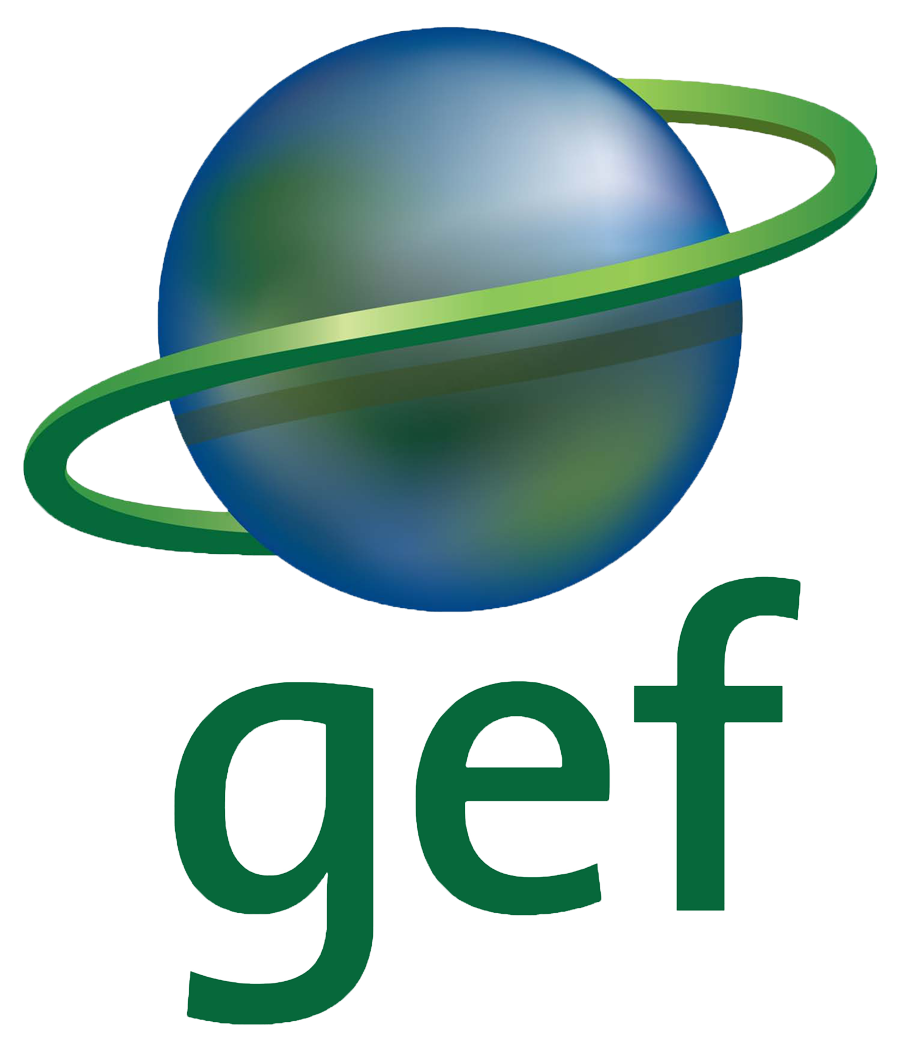Background & Situation Menu
Status and Trends in Fisheries and their Habitats Threats, root causes and barrier analysis Institutional, sectoral and policy context Stakeholder mapping and analysis Baseline analysis and gaps Known Areas of Critical Significance to the Life-Cycles of Fisheries Resources Priority Fisheries Refugia Areas




Establishment of Fisheries Refugia in Cambodia:
Background and Situation Analysis to Support
Known Areas of Critical Significance to the Life-Cycles of Fisheries Resources
1. Spawning areas:
Several ichthyoplankton surveys have been conducted in various parts of the Philippines, the findings of which provide some insight into areas of significance for fish spawning. However, as larvae are generally only identifiable to family level, difficulties exist in identifying species-specific spawning grounds. Spawning grounds for tuna include the west coast of Palawan, Mindoro Strait extending further into the Sulu Sea, the offshore areas of Manila Bay-Zambales, and the Ilocos coast. More recent information indicates that the Celebes Sea, including Moro Gulf, is the major spawning area for tuna, with subsequent migration through the Sulu Sea via Balabac Strait, Northern Palawan, and Mindoro Strait. This migration facilitates mixing of tuna stocks from the South China Sea with those from the Celebes Sea.
Information and data relating to zooplankton biomass and ichthyoplankton density in various areas along the western Philippines and adjacent internal waters provide some insight into key fish spawning areas in the SCS. Surveys indicate high fish egg and larvae densities in 4 key locations, the first being Malampaya Sound, a deep embayment on the west coast of northern Palawan. Zooplankton biomass is also shown to be correspondingly high in this area. Accordingly, and based solely on the basis of plankton densities, Malampaya Sound is considered a key spawning ground for various fish species of significance. Although as information regarding the species composition of ichthyoplankton collected in Malampaya Sound is scarce, it is difficult to identify the individual species or families which utilise this site for spawning. Survey data has also shown Mindoro Strait to contain high larval fish densities, with species of Thunnidae, Carangidae, Serranidae, and Mullidae comprising over 75 percent of the ichthyoplankton in this area.
Comparable larval densities have also been recorded in Lingayen Gulf and Northern Palawan. In Lingayen Gulf, eggs and larvae were concentrated along the coast from the southern central to the eastern portions of the Gulf, whereas low ichthyoplankton densities were recorded at the mid-Gulf stations. More recent sampling shows an almost hundredfold difference in zooplankton biomass between the high concentrations in the Western Gulf region extending from Bolinao to the Hundred Islands Reef system, and the rest of the Gulf. Water circulation in Lingayen Gulf is forced by the northward shelf current passing Cape Bolinao, resulting in a wake feature that forms an eddy across the mouth of the Gulf. Dispersal modeling has shown that most larvae sourced near the Bolinao Reef Flat are entrained in the headland eddy, favouring settlement and recruitment along the western Gulf region. Therefore, it is more likely that the latter region is a major spawning ground for reef and other fish within Lingayen Gulf.
High fish egg concentrations have also been recorded about 100 nm off the coasts of Ilocos southward to Zambales, with high larval densities occurring further south and in internal waters of Mindoro and Northern Palawan. The dominant fish groups associated with those surveys include the gobiids, carangids, and apogonids, which were found closer inshore, whereas the scombrids and thunnids were found further offshore. In northern Palawan, spawning grounds are believed to occur further inshore, particularly within the numerous embayments and indentations along the coast. The major pelagic groups in the area include the carangids, clupeids, scombrids, and engraulids, whereas the most common epibenthic groups are the gobiids, mugilids, and the reef-associated haemulids, monacanthids, and lutjanids. Collectively, these groups comprised about 65% of the larval assemblage in the area.
While work to link observed fish egg and larvae information with oceanographic processes and transport is ongoing, the best available information summarised above indicates that key spawning areas are: (a) Malampaya Sound; (b) the western portion of Lingayen Gulf; (c) Mindoro Strait; and (d) Northern Palawan including the Calamianes Islands. It is also believed that Scarborough Shoal and the Kalayaan Island Group are major sources of propagules for the country’s archipelagic waters and fishing grounds, although comparable information (e.g. ichthyoplankton) for use in undertaking a more definitive examination are lacking.
2. Nursery areas and feeding grounds:
There exists a paucity of available information regarding the productivity of western Philippines waters in the SCS and the utilisation of specific locations for nursery areas and feeding grounds by important fisheries resources. The area south of Subic Bay extending to waters west of northern Palawan has higher phytoplankton biomass, as indexed by chlorophyll α concentrations, than waters further north. Relatively high concentrations of chlorophyll α are also observed for the shelf, shoal, and oceanic areas west of northern Palawan. High zooplankton biomass is also closely associated with areas of high chlorophyll α concentrations in these areas. Purse seine fishing experiments conducted in the vicinity in 1998 showed that catch rates for small pelagic fish, primarily Decapterus spp., were at least tenfold higher just off the Bataan Peninsula than in other coastal areas further north or south, thus showing a good spatial correspondence with the concentrations of phytoplankton and zooplankton, as well as the utilization of this location by juvenile fish.
From the information presented above, it can also be inferred that, within the SCS sub-region, high fish abundance is in close spatial correspondence with both high zoo- and phytoplankton biomass. Hence, it follows that higher concentrations of nutrients are required to sustain the primary and secondary production, which in turn supports the fisheries production capacities, in coastal embayments. Accordingly, if early developmental stages (e.g. larvae) of coastal stocks were to benefit from areas that provide natural protection from open water predation, and from those where productivity adequately supports high consumption and rapid growth rates, Lingayen Gulf and Manila Bay would likely serve as important nursery grounds. The prevalence of juveniles in trawl catches in Lingayen Gulf and Manila Bay is a clear indication that both areas serve as nursing and feeding grounds for many coastal stocks, including those of transboundary significance. Definitely, for some species, these areas would be important spawning grounds as well, although for migratory species such as tuna and other large pelagics, their dependence on such areas for spawning is uncertain.
3. Enhancing the information base:
The information presented above provides insight into broad areas considered important as spawning, nursery and feeding grounds for fish stocks. To assist in building the information base on areas significant to the life-cycles of fisheries resources, the seventh meeting of the UNEP/GEF South China Sea project's Regional Working Group on Fisheries (RWG-F) considered during its seventh meeting a preliminary inventory of known spawning areas in the Gulf of Thailand for significant pelagic, demersal, and invertebrate species. To assist in developing a more comprehensive basis for the development of a list of critical spawning and nursery areas for important fish species, members of the RWG-F agreed to compile information during the inter-sessional period on: the UNEP/GEF South China Sea Project’s Habitat Demonstration Sites that are critical inshore nursery refugia for important demersal species, locations in the South China Sea and Gulf of Thailand that are utilised by important pelagic species for spawning, and existing fisheries management areas that may qualify as candidate sites of fisheries refugia. The National Fisheries Research and Development Institute (NFRDI) compiled this information for review by the Philippine’s National Fisheries Committee prior to its sharing at the regional level.
The subsequent and eighth meeting of the RWG-F considered document UNEP/GEF/SCS/RWG-F.8/5 "Information Collated by the Fisheries and Habitat Components of the South China Sea Project on Sites Important to the Life-Cycles of Significant Fish Species". This document contained a review of all information collated by the fisheries and habitat components of the South China Sea Project on fish-habitat linkages. The sources of this information included: national reports on fisheries; national reports on coral reefs, seagrass, mangroves, and wetlands; SCS habitat site characterisations; habitat demonstration site project documents; the South China Sea online meta-database; and information contributed directly by fisheries and habitat focal points. That meeting agreed that this information should be used to identify and characterise fish spawning and nursery areas in the Gulf of Thailand and the South China Sea. Members formed country-based sessional working groups to prepare country summaries of known critical spawning and nursery areas in their respective countries. These sessional working groups collated information regarding: approximate geographical location of the site; species known to utilise the site; known usage of the site (i.e. as spawning and/or nursery area; time of year that the site is utilised as a spawning or nursery area; and the information source. During the inter-sessional period, NFRDI undertook national consultations with the academe and fishing communities to refine this information.
The ninth meeting of the RWG-F reviewed discussion document UNEP/GEF/SCS/RWG-F.9/8, "Review of Information regarding known Spawning and Nursery Areas and the Establishment of Pilot Fisheries Refugia Sites in the South China Sea and Gulf of Thailand", and update information for each known spawning and nursery area and add new sites to the list as appropriate. The revised list of known spawning and nursery areas for economically important fish species in Philippine’s waters of the South China Sea and Gulf of Thailand, was considered by the national consultation workshop for the preparatory phase of the SOPAC/UNEP/GEF project “Establishment and Operation of a Regional System of Fisheries Refugia in the South China Sea and Gulf of Thailand”, and is presented below as Table 1.
Table 1: Known Critical Spawning and Nursery Areas for Significant Fish Species in the Philippines.
Site Name |
Geographic Location |
Species Known to Utilise the Site |
Known Usage of the Site |
Information Sources |
|
Nursery |
Spawning |
||||
Lingayen Gulf |
16o12’42’’ – 120o08’17’’ |
Threadfin bream (Nemipterus spp.) |
● |
● |
Fisheries & habitat reports |
Mangrove red snapper (Lutjanus argentimaculatus) |
● |
|
Fisheries & habitat reports |
||
Brownstripe red snapper (Lutjanus vitta) |
● |
|
Fisheries & habitat reports |
||
Leopard coralgrouper (Plectropomus leopardus) |
● |
● |
Fisheries & habitat reports |
||
White-spotted spinefoot (Siganus canaliculatus) (Rabbitfish) |
● |
● |
Fisheries & habitat reports |
||
Mottled spinefoot (Siganus fuscescens) (Rabbitfish) |
● |
● |
Fisheries & habitat reports |
||
Sixbar grouper (Epinephelus sexfasciatus) |
● |
● |
Fisheries & habitat reports |
||
Greasy grouper (Epinephelus tauvina) |
● |
● |
Fisheries & habitat reports |
||
Frigate tuna (Auxis thazard) |
● |
|
Fisheries & habitat reports |
||
Bullet tuna (Auxis rocheii) |
● |
|
Fisheries & habitat reports |
||
Spanish mackerel (Scomberomorus commersoni) |
● |
|
Fisheries & habitat reports |
||
Short mackerel (Rastrelliger brachysoma) |
● |
|
Fisheries & habitat reports |
||
Masinloc |
15o48’-15o59’N 119o89’-119o97’E |
Skipjack tuna (Katsuwonus pelamis) |
● |
● |
Fisheries & habitat reports |
Yellowfin tuna (Thunnus albacares) |
● |
● |
Fisheries & habitat reports |
||
Bigeye tuna (Thunnus obesus) |
● |
● |
Fisheries & habitat reports |
||
Round scads (Decapterus spp.) |
● |
● |
Fisheries & habitat reports |
||
Frigate tuna (Auxis thazard) |
● |
● |
Fisheries & habitat reports |
||
Bullet tuna (Auxis rocheii) |
● |
● |
Fisheries & habitat reports |
||
Sardines (Sardinella spp.) |
● |
|
Fisheries & habitat reports |
||
Ilocos Coast |
16°20' N - 120°15' E |
Caranx |
● |
● |
NFRDI |
Nemipterids |
● |
● |
NFRDI |
||
Siganids |
● |
● |
NFRDI |
||
Gobies |
● |
● |
NFRDI |
||
Tunas |
● |
● |
NFRDI |
||
Groupers |
● |
● |
NFRDI |
||
Sardines |
● |
● |
NFRDI |
||
Anchovies |
● |
● |
NFRDI |
||
Batangas Coast |
13O39’’N – 120o44’E |
Frigate tuna (Auxis thazard) |
● |
● |
Fisheries report |
Bullet tuna (Auxis rocheii) |
● |
● |
Fisheries report |
||
Sardines (Sardinella spp.) |
● |
|
Fisheries report |
||
Rastrelliger kanagurta (Indian mackerel) |
● |
|
Fisheries report |
||
Rastrelliger brachysoma (Short mackerel) |
● |
|
Fisheries report |
||
Calamianes |
12o00’49’’N – 120o05’10’’ |
Torpedo scad (Megalaspis cordyla) |
● |
|
FISH Project report |
Spatelloides gracilis |
● |
● |
FISH Project report |
||
Yellowtail scad (Atule mate) |
● |
|
FISH Project report |
||
Bigeye scad (Selar crumenophthalmus) |
● |
|
FISH Project report |
||
Indian mackerel (Rastrelliger kanagurta) |
● |
|
FISH Project report |
||
Sapanish mackerel (Scomberomorus commersoni) |
● |
|
FISH Project report |
||
Oxeye scad (Selar boops) |
● |
|
FISH Project report |
||
Leopard coralgrouper (Plectropomus leopardus) |
● |
● |
FISH Project report |
||
|
White-spotted spinefoot (Siganus canaliculatus) (Rabbitfish) |
● |
● |
FISH Project report |
|
Frigate tuna (Auxis thazard) |
● |
|
Fisheries report |
||
Bullet tuna (Auxis rocheii) |
● |
|
Fisheries report |
||
Blue swimming crab (Portunus pelagicus) |
● |
● |
FISH Project report |
||
Malampaya Sound |
11o01’N – 119o17’E |
Indian anchovy (Stolephorus indicus) |
● |
|
Habitat report |
Commerson's anchovy (Stolephorus commersonnii) |
● |
|
Habitat report |
||
Common ponyfish (Leiognathus equulus) |
● |
● |
ADB RETA |
||
Blue swimming crab (Portunus pelagicus) |
● |
● |
Habitat report |
||
Banana Prawn (Penaeus merguiensis) |
● |
● |
Habitat report |
||